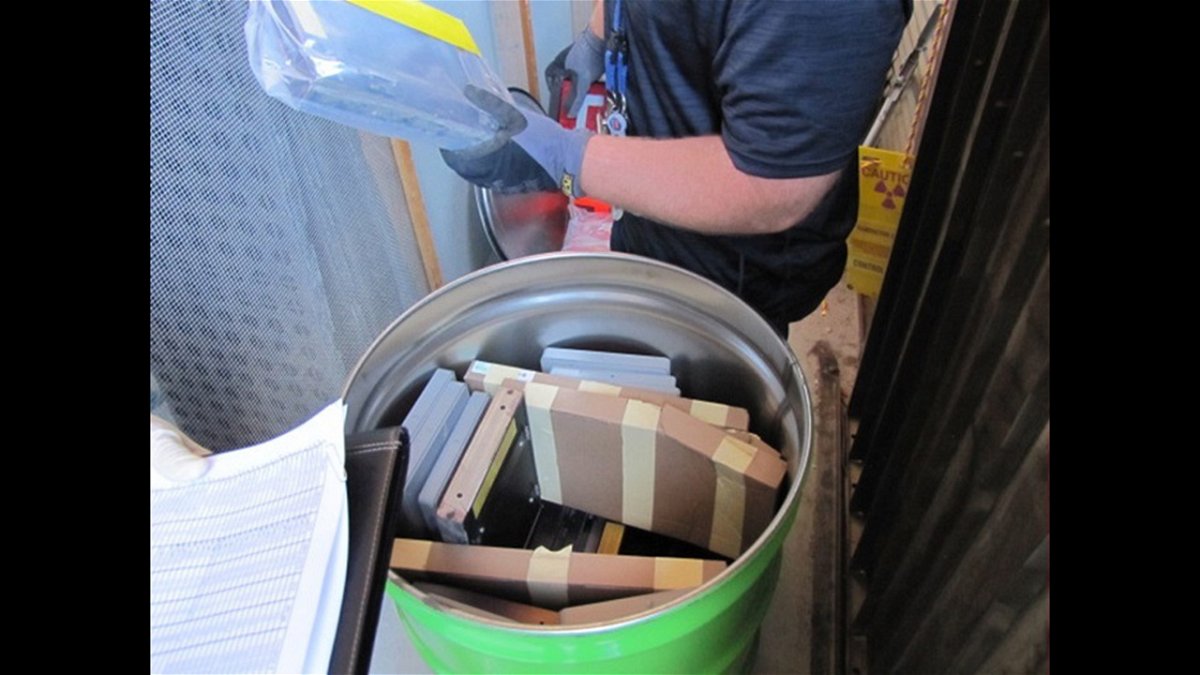EM sites team up to conduct virtual waste inspection

IDAHO FALLS, Idaho (KIFI) - Two Department of Energy (DOE) Environmental Management (EM) programs recently collaborated to enhance an established radioactive waste inspection process, allowing for continued safe, secure and compliant waste shipments from one DOE site to another, while minimizing travel and person-to-person contact during the COVID-19 pandemic.
Personnel from the Idaho National Laboratory (INL) Site and EM Nevada Program integrated remote communications tools to enhance required visual inspections of waste containers to be shipped from Idaho to the Nevada National Security Site (NNSS) for ultimate disposal.
To make it happen, Stuart Gerard, waste certification official for EM INL Site contractor Fluor Idaho, provided Radioactive Waste Acceptance Program (RWAP) specialist Ann Koplow with a DVD containing real-time radiography imaging of filled waste containers in Idaho to be verified. Koplow is an employee with Navarro Research and Engineering, Inc., the environmental program services contractor responsible for administering the RWAP on behalf of EM Nevada. Real-time radiography works much like an X-ray, allowing a RWAP professional to view the contents inside of a waste container.
From a laptop at her telework location in Nevada, Koplow reviewed the video to ensure the contents of each container met both the waste profile descriptions and permit requirements for disposal at the NNSS. Koplow completed her remote visual verification using a secure smartphone application and Gerard’s help to give her a real-time look at the final placement and closure of the containers.
This application of technology saved days of RWAP travel to and from Idaho, avoiding ancillary expenses. Most importantly, the virtual visual verification process eliminated the need for direct contact between the Nevada and Idaho program workforces, reducing the risk of COVID-19 transmission among the sites.
“Despite the challenges posed by the COVID-19 pandemic, our team has remained fully committed to the safe, secure, and successful execution of EM Nevada’s waste management mission,” said Koplow. “We thank our partners at the Idaho National Laboratory Site for helping to enhance our vital waste verification processes during the current period of adjusted operations.”
Gerard noted that the COVID-19 pandemic led the INL Site and EM Nevada programs to think outside the box to fulfill the cleanup mission.
“I appreciate EM Nevada’s assistance in developing an innovative solution to enhance their waste inspection process to allow us to continue to meet our regulatory agreements,” Gerard said.
The NNSS plays a pivotal role in the cleanup of DOE sites involved in historic nuclear research, development, and testing, and ongoing national security and science missions by providing a safe, secure, and effective asset for the permanent disposal of low-level, mixed low-level, and classified radioactive waste.
Waste disposed at the NNSS is only accepted from approved federal sources and must comply with rigorous NNSS waste acceptance criteria. The INL is required to ship specific wastes out of Idaho in compliance with the 1995 Idaho Settlement Agreement.






